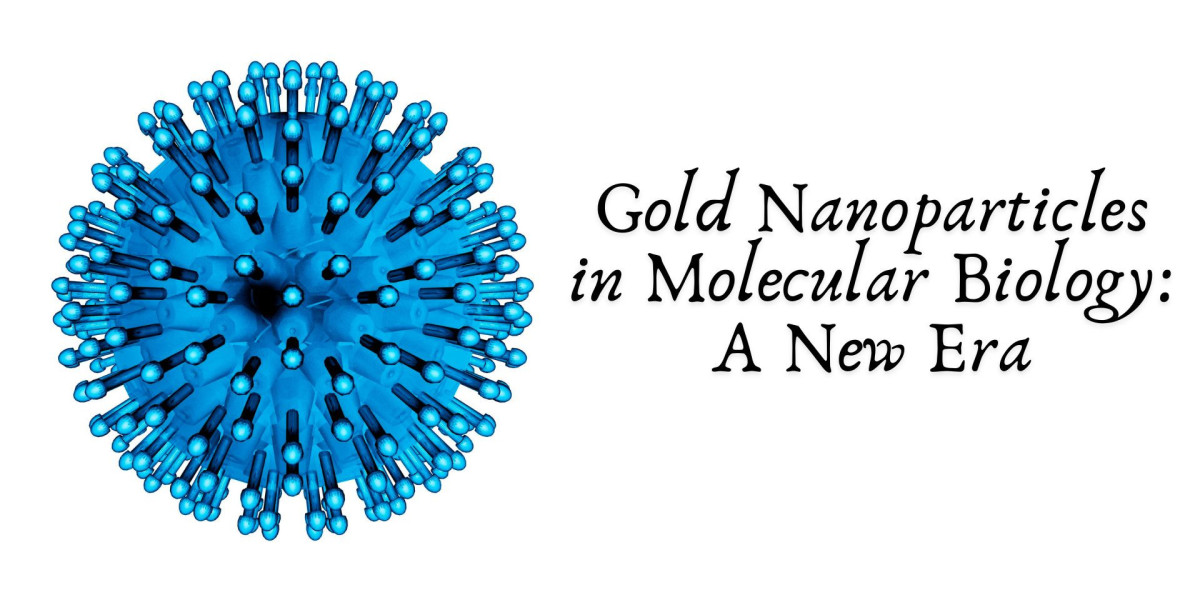In the dynamic and ever-evolving field of molecular biology, the integration of nanotechnology has led to groundbreaking innovations. Among the various nanomaterials under investigation, gold nanoparticles (AuNPs) have emerged as a particularly promising tool, ushering in what many are calling a new era in biological research and biomedical applications. Their unique physical, chemical, and optical properties have opened new doors in diagnostics, imaging, gene delivery, and therapeutics. This article delves into how gold nanoparticles are transforming molecular biology, highlighting their mechanisms, applications, and future potential.
Understanding Gold Nanoparticles
Gold nanoparticles are colloidal gold particles ranging in size from 1 to 100 nanometers. At the nanoscale, gold exhibits properties that are remarkably different from its bulk form. For example:
Surface plasmon resonance (SPR): This property enables AuNPs to absorb and scatter light efficiently, making them ideal for optical imaging and biosensing.
High surface-to-volume ratio: Provides a large surface area for the attachment of various biomolecules.
Biocompatibility and stability: Gold is generally non-toxic and resistant to oxidation, which is critical for biological applications.
The ease of synthesis and functionalization of AuNPs allows for customization with DNA, RNA, proteins, antibodies, and drugs, enabling targeted and efficient biological interactions.
Applications in Molecular Biology
Molecular Diagnostics and Biosensing
One of the most impactful applications of gold nanoparticles in molecular biology is in diagnostic biosensors. The SPR of AuNPs enables sensitive colorimetric detection of nucleic acids, proteins, and pathogens.
Colorimetric assays: When gold nanoparticles aggregate, their color changes from red to blue. This shift is used in simple, rapid, and highly sensitive detection assays, such as in identifying specific DNA or RNA sequences.
Lateral flow assays (LFAs): AuNPs are key in point-of-care tests (like pregnancy tests and COVID-19 test kits), offering easy visualization and interpretation.
Surface-enhanced Raman scattering (SERS): Functionalized AuNPs amplify Raman signals of target molecules, enhancing detection sensitivity by several orders of magnitude.
DNA and RNA Detection
AuNPs can be functionalized with oligonucleotides to detect complementary nucleic acid sequences with exceptional sensitivity and specificity.
Hybridization-based detection: Gold nanoparticle-DNA conjugates are used to detect target DNA or RNA via hybridization, leading to either particle aggregation or fluorescence changes.
MicroRNA (miRNA) analysis: Due to the role of miRNAs in gene regulation and disease, AuNP-based assays offer promising tools for cancer diagnostics and personalized medicine.
Gene Delivery and Therapeutics
Gold nanoparticles serve as efficient carriers for gene delivery due to their size, stability, and ability to enter cells.
Non-viral vectors: AuNPs conjugated with nucleic acids (DNA/RNA) and targeting ligands can deliver genetic material to specific cells with minimal immune response.
Controlled release systems: Surface coatings and stimuli-responsive designs allow for the precise release of therapeutic agents in response to pH, light, or enzymes.
Imaging and Cellular Tracking
The optical properties of AuNPs make them excellent contrast agents for various imaging modalities.
Fluorescence and dark-field microscopy: AuNPs scatter light intensely, enhancing the contrast of biological samples.
Photoacoustic imaging: Combines light and sound for high-resolution, deep-tissue imaging, particularly useful for tracking cancer cells and tumors.
Electron microscopy: Gold’s high electron density offers clear visualization of tagged biomolecules at the ultrastructural level.
Protein Interaction Studies
Gold nanoparticles can mimic the natural cellular environment and serve as platforms for studying protein-protein and protein-DNA interactions.
Affinity-based assays: By attaching specific ligands or antibodies to AuNPs, researchers can isolate and analyze target proteins with high specificity.
Kinetic analysis: The interaction of proteins with AuNP-conjugates can be monitored in real time, providing insights into binding affinities and reaction rates.
Advantages of Gold Nanoparticles in Molecular Biology
High sensitivity and specificity: AuNP-based assays detect molecules at femtomolar to attomolar concentrations.
Rapid and portable diagnostics: Especially valuable in low-resource settings or for field applications.
Multifunctionality: Capable of combining diagnostic, therapeutic, and imaging functions in a single platform (theranostics).
Minimal toxicity: With proper functionalization, gold nanoparticles show low cytotoxicity and high biocompatibility.
Challenges and Considerations
Despite their promise, several challenges must be addressed to fully integrate AuNPs into clinical and research settings:
Scalability and reproducibility: Consistent synthesis with uniform size and shape is crucial for reproducible results.
Long-term toxicity and clearance: Although generally safe, long-term accumulation and biological effects require more investigation.
Regulatory hurdles: Standardization and approval processes for nanoparticle-based diagnostics and therapeutics are still evolving.
Cost: High-purity AuNP production and functionalization can be expensive, limiting widespread adoption.
Future Prospects
The field of nanobiotechnology is rapidly advancing, and gold nanoparticles are poised to play a central role in the molecular biology of tomorrow.
Personalized medicine: AuNPs could enable real-time monitoring and tailored therapies based on individual genetic profiles.
Lab-on-a-chip systems: Integration with microfluidics for miniaturized, automated diagnostics.
CRISPR-AuNP hybrids: Combining gene editing tools like CRISPR with AuNP delivery platforms for precision medicine.
Smart biosensors: AI-powered and smartphone-compatible sensors using AuNPs for remote health monitoring.
Conclusion
The advent of gold nanoparticles in molecular biology marks a transformative era—one where detection becomes faster, diagnostics become smarter, and therapies become more targeted. From the lab bench to the clinic, AuNPs are redefining the boundaries of what’s possible in molecular research and biomedical science. As research continues and technologies mature, gold nanoparticles will likely become indispensable tools in our quest to understand and manipulate the molecular mechanisms of life.








